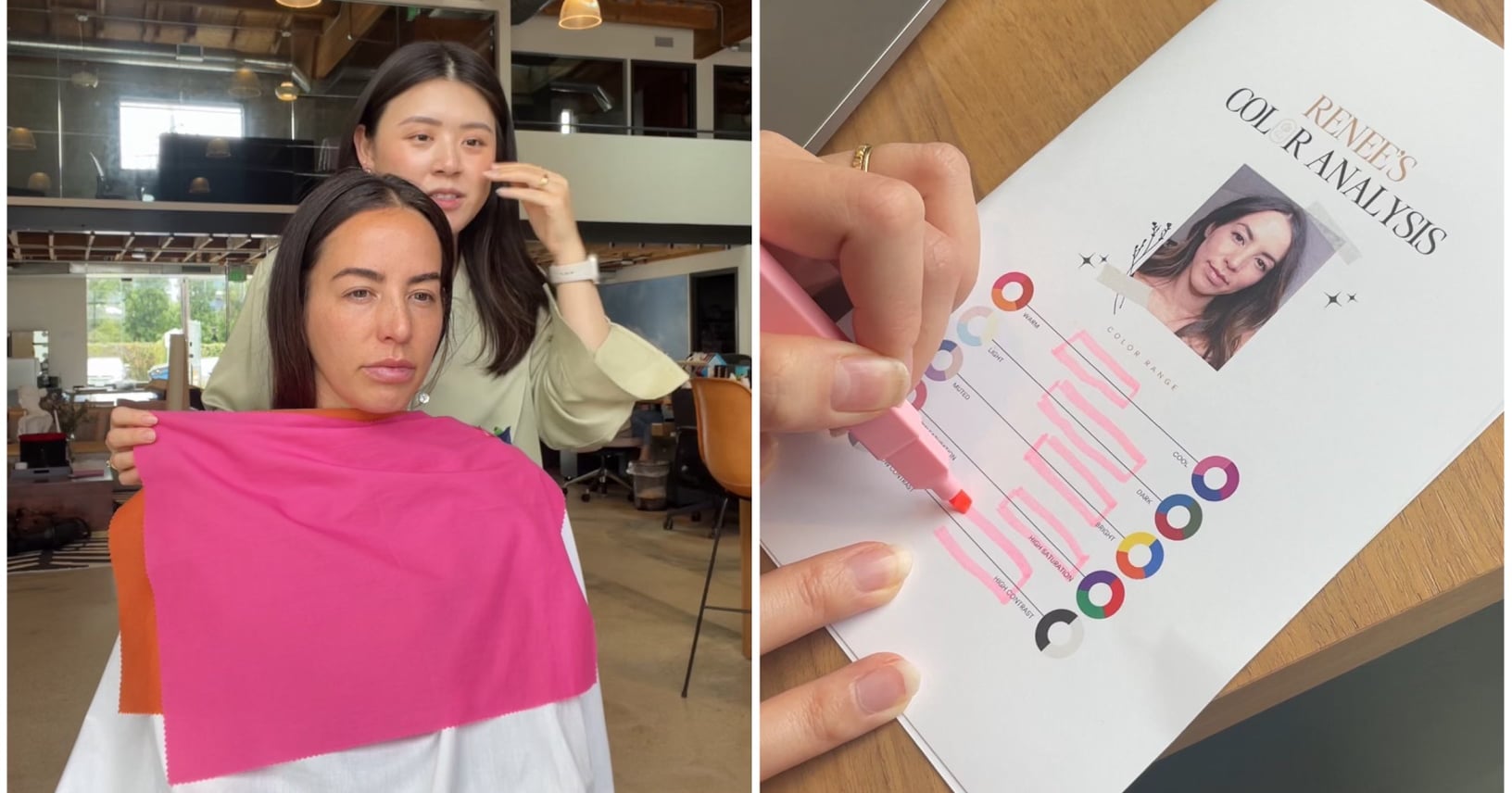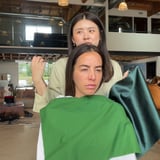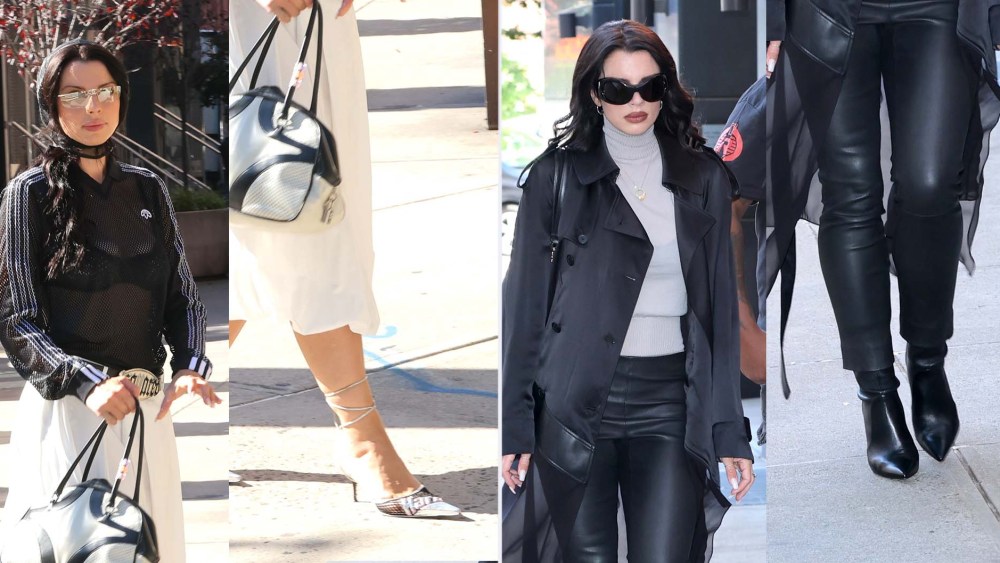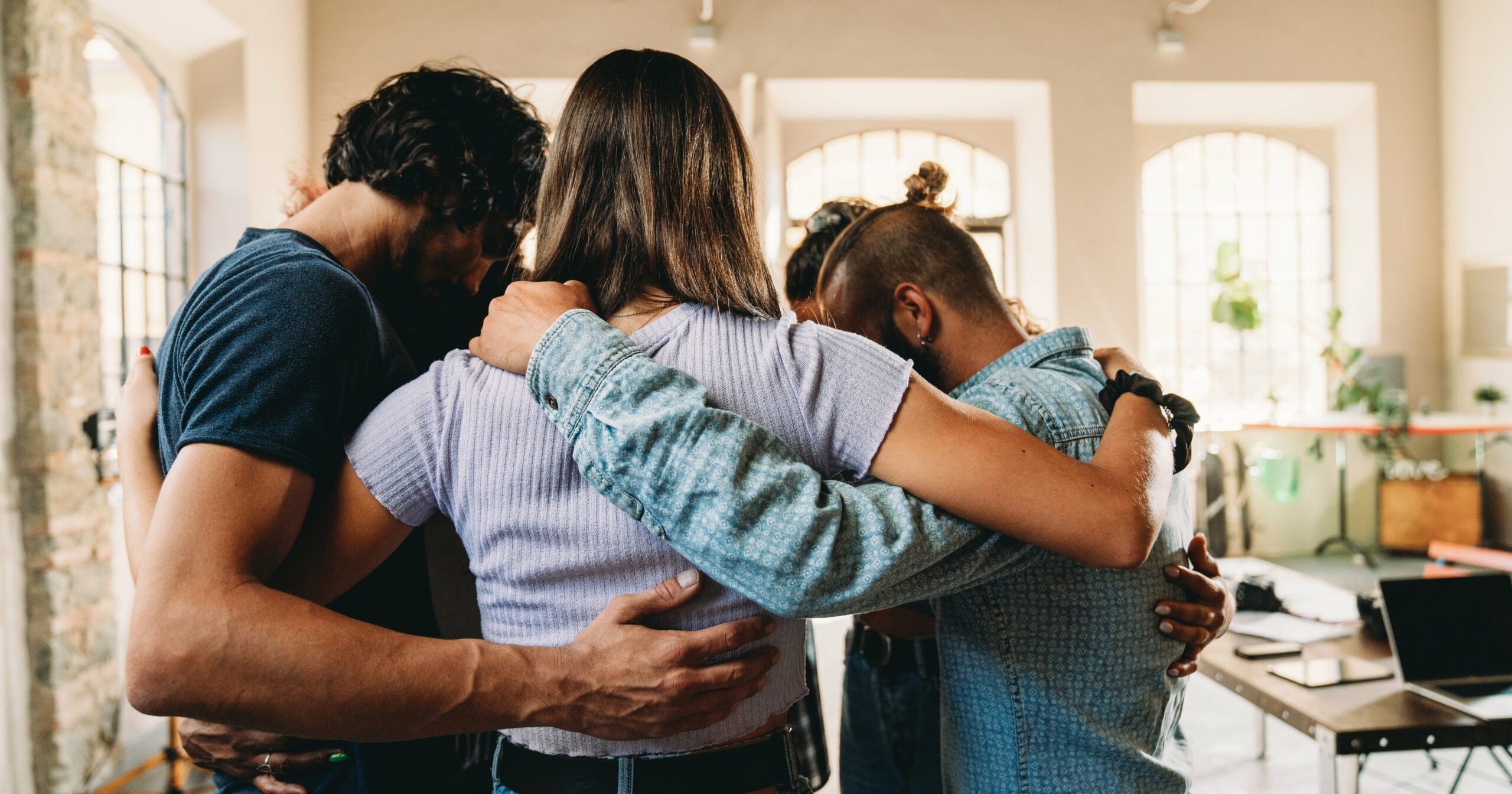If you’ve spent any time on TikTok in the last few months, you’ve probably watched someone get a color analysis. The trend has been all over social media lately, and recently, I’ve been hard pressed to log into the app without seeing at least one person testing it out. For those unfamiliar, color analysis is essentially just “analyzing” what colors are the most flattering on you by taking into account your hair color, eye color, and your >skin tone and undertone.
People are grouped into four main color palettes, which are named after seasons: summer, spring, autumn, and winter. There are key colors that each season identifies with, however, there are different variations based on saturation, contrast, and undertone. The process can help you identify the colors you’ll look best wearing when it comes to clothing, makeup, and hair color.
Experts Featured in This Article
Karina Hui is a certified color analyst for Em Cosmetics.
I’ve been interested in trying color analysis for the longest time, and I finally had the chance to do so during a recent visit to the Em Cosmetics headquarters, where I met with Karina Hui, a certified color analyst. When I first got to my appointment, Hui brought me over to a station located next to a huge window that had a lot of natural light. After going through what the process would look like, as well as taking me through the benefits of color analysis, she instructed me to sit in front of the mirror. From there, she covered me with a white cloth and tucked the ends of my hair into it, so it wouldn’t be distracting or conflict with the colors we were testing.
Then, for the next hour, Hui helped me determine my undertone and my season by draping different colored fabric swatches across my chest under my face. Throughout the process, Hui would pause at different shades and point out specific things to me – for example, although my wardrobe consists of mostly black and white (two colors that are in the “winter” season) she wanted me to note how they washed me out, made my sun spots more apparent, and made my lips look pale. Instead, she demonstrated how a creamy white or a warmer black were better options for me.
As for my undertone, she explained that I have a neutral undertone, which is what I expected based on the makeup products I use. As for the season, I’m an autumn, but on the dark side, which means that more saturated shades on the color wheel work best for me.
Although my color range is more neutral, Hui says she sees me going more warm with my shades. She also says I look best in the medium to deep spectrum of colors. “When it’s too dark it look very heavy and disconnected, but when it’s too light it casts some whites on you, although I do love you in the creams,” she says. When it comes to muted versus bright colors, grayish colors wash me out but the brightest of the brights don’t work for me either.
However, because I’m a dark autumn, Hui says that I can work with some dark winter colors, like a soft black. (So I don’t need to throw out my entire wardrobe, thank God.)
We also determined that I look best in gold jewelry versus silver and went over what makeup tones would look good on me. We got to play around with a bunch of Em Cosmetics products and she pointed out different shades that would bring out my best features. She even suggested trying a red lip, which I was firmly against, but I did promise to test some other hues that were a little out of my comfort zone.
Although I was nervous to try out a whole new makeup look, this week I decided to switch things up, albeit minimally. I usually go for brown eyeshadows, but I always opt for cool tones. Instead, I used warmer shades as Hui suggested and went with the Dibs Beauty Palm Palette ($36). I also swapped out my typical bright pink blush and went for something with a little bit of brown – the Haus Labs Color Fuse Blush Powder ($32) – since Hui said deep brown shades worked well on me. I kept my base makeup the same, but I did swap out my typical matte bronzer in favor of the Tower 28 Beauty Bronzino Illuminating Cream Bronzer ($20), which has a little more warmness to it.
During my first meeting of the day, my manager asked me if I was doing anything different with my makeup because it looked “really good,” which pretty much solidified my new look for me. When two of my other friends commented on how good I looked later that day over FaceTime, I knew there was something to this whole color analysis trend.
Now, to be clear, I haven’t quite decided to embark on testing out any other colors of clothing. I’m an all-black outfit girlie through and through, but the response to my new makeup look was overwhelmingly positive, so I think I’ve been convinced to continue experimenting.
Renee Rodriguez is a staff writer and social producer for PS. She writes across all verticals, but her main areas of expertise focus on fashion and beauty content with an emphasis on reviews and editor experiments. She also produces social content for the PS TikTok and Instagram accounts.




